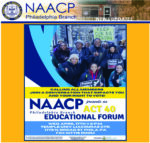minority news
A study led by Temple University researchers revealed that despite warnings about borrowing medication prescribed to other people, past studies have demonstrated that many Americans say they have used someone else’s medication at least once in a given year.
The study, appearing in the August issue of the Journal of Urban Health, revealed in low income, urban populations, this rate was stereotypically thought to be higher due to a number of factors, including a perceived lack of access to health care and higher rates of crime and drug abuse.
However, researchers found the rates of using someone else’s medication among this population were about on par with the rest of the country.
“The trend of borrowing or using someone else’s prescription hadn’t been studied in this population, as far as we know,” said Lawrence Ward, the study’s lead author and associate professor of medicine at the medical school. “The perception was that those from a lower socioeconomic background would be more apt to use ill-gotten drugs, and we found that to not be the case.”
Ward and his team, including medical resident Shaden Eldakar-Hein and Nima Patel-Shori and Kristin Sherlinski of the pharmacy school, surveyed patterns of borrowing prescription medication among 641 participants seeking outpatient, emergency or inpatient care.
However, the vast majority of this group – 90 percent – reported having health insurance, and about 75 percent had recently seen their primary health care provider. Overall, 18 percent reported ever taking a prescription medication originally meant for use by someone else. This usage rate was on par with the results of studies in other populations across the country. The researchers add that their results may even underestimate the rate of prescription borrowing.
“I think this helps to break some stereotypes, particularly in the way doctors view their patients,” said Ward. “Just because patients are from a less affluent area, they are not more apt to borrow prescription medications than their more educated or more affluent counterparts.”
The researchers also found that – similar to national averages – the most common reason for borrowing medication was simply convenience, and were most commonly obtained from a friend or family member, rather than via more illicit routes such as theft or from a dealer.
Most of the respondents were African-American (75 percent), were high-school educated or less (71 percent) and lacked full-time employment (68 percent).
The most common drug borrowed from others was pain medication (74 percent), followed by treatments for anxiety and depression (14 percent), heart disease (9 percent), and infection (8 percent).
“The respondents either couldn’t get to their doctor’s office, or couldn’t get to the pharmacy in a reasonable amount of time, so the thought process was, if they could get medication from a family or friend, they wouldn’t have to wait,” said Ward.
Ward cautions that anyone borrowing medications from someone else – even if it’s very infrequently – can open themselves up to a host of health risks, including a delay in proper medical treatment, an increase in medication resistance and adverse drug to drug interactions.
The next step in Ward’s research will be to study physicians’ perceptions of the problem, to better understand to what degree they believe their patients engage in medication borrowing.
“We need to work towards better awareness of the problem,” said Ward. “Many patients might not realize the risk they take when using someone else’s medication. Doctors must recognize that at least 20 percent of their patients may be using another person’s medications, and should regularly enquire about medication use and stress the dangers of medication borrowing.”
Other researchers on this study are Stephanie Ward, formerly of the Temple School of Medicine, and Alexandra Hanlon of the University of Pennsylvania School of Nursing. Funding for this research was provided by the Temple University Center for Minority Health and Health Disparities.















Leave a Comment